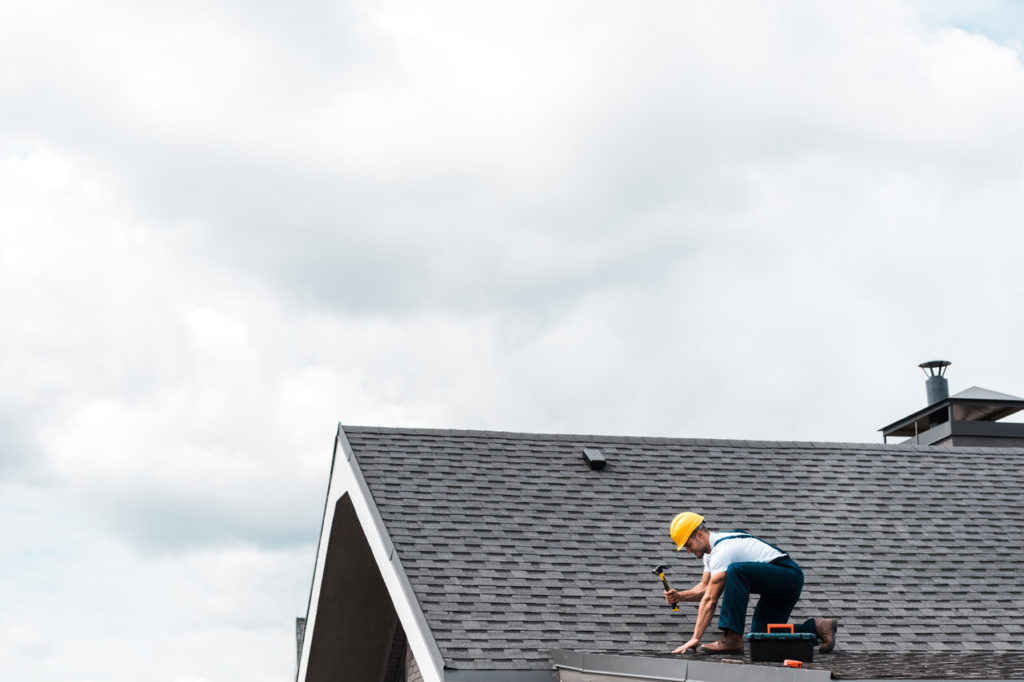As environmental concerns continue to gain importance, many homeowners are seeking ways to reduce their carbon footprint and make their homes more energy-efficient and sustainable. One key area to consider when aiming for an eco-friendly home is your roofing system, as it plays a significant role in the overall energy efficiency and environmental impact of your property. By exploring environmentally friendly roofing solutions, you can find options that contribute to your home’s sustainability and offer long-lasting durability, performance, and a visually appealing aesthetic.
Full House Roofing is committed to helping homeowners in Kingston and the surrounding areas identify and implement eco-friendly roofing solutions tailored to their specific needs. In this article, we will discuss the key factors to consider when evaluating environmentally friendly roofing materials, such as energy efficiency, recyclability, and longevity. We will also explore popular eco-friendly roofing options available on the market and their unique advantages. By understanding the benefits of sustainable roofing materials and working with a knowledgeable roofing contractor, you can make informed decisions that will support your home’s efficiency and reduce its overall environmental impact.
Exploring Environmentally Friendly Roofing Solutions for Your Home
1. Key Factors to Consider for Eco-Friendly Roofing
When selecting an environmentally friendly roofing material, it is crucial to assess several characteristics that contribute to its overall sustainability and performance.
– Energy Efficiency: An energy-efficient roofing material should help maintain a comfortable indoor climate, reducing energy consumption and associated greenhouse gas emissions.
– Recyclability: Choosing a roofing material that is recyclable or made from recycled content can reduce waste in landfills and lessen the negative impacts on the environment.
– Longevity: Opt for materials that boast long lifespans, requiring fewer replacements and minimizing the consumption of resources over time.
– Production Impact: Consider the environmental impact of the manufacturing process and the amount of energy and resources required to create the roofing material.
2. Popular Environmentally Friendly Roofing Options
Several eco-friendly roofing materials are well-suited for homeowners looking to reduce their property’s environmental footprint and improve energy efficiency.
– Metal Roofing: Metal roofs have a high solar reflectance, which helps reduce heat absorption and the need for air conditioning. This material is also highly durable, recyclable, and often made from recycled content.
– Solar Roof Shingles: Solar shingles incorporate photovoltaic technology into their design, allowing you to generate electricity for your home. By producing renewable energy, you can lower your energy costs and contribute to a greener future.
– Green Roofs: A green roof, or living roof, involves installing a layer of vegetation on your rooftop. This natural insulation helps regulate indoor temperatures, reducing the need for heating and cooling while providing a habitat for urban wildlife and improving air quality.
– Rubber Roofing: Made from recycled tires, rubber roofing is an eco-friendly choice for flat and low-pitched roofs. This lightweight material offers excellent energy efficiency and durability, requiring less energy and resources for transportation and installation.
3. Evaluating Your Home’s Specific Requirements
When considering a sustainable roofing material, it’s essential to evaluate your home’s unique requirements and the local climate to ensure the chosen material will provide optimal performance.
– Roof Pitch and Structure: Some eco-friendly roofing materials may be better suited for certain roof pitches and structures. Consult with a professional roofing contractor to determine the best options for your home.
– Local Climate: The local climate should be a significant factor in your decision-making process, as certain materials may perform better in specific weather conditions.
– Aesthetics: Your personal preferences and the architectural style of your home should also play a role in selecting the right environmentally friendly roofing material.
4. Working with an Eco-Friendly Roofing Contractor
Collaborating with a roofing contractor who specializes in eco-friendly solutions can ensure you receive expert advice and tailored solutions for your sustainable roofing needs.
– Expert Installation: A professional roofing contractor with experience installing eco-friendly materials can guarantee the correct installation, ensuring optimal durability and performance.
– Knowledgeable Recommendations: An eco-friendly roofing contractor will have extensive knowledge of environmentally friendly roofing materials, best practices, and how to choose the most suitable option for your home.
– Consumer Education: A contractor well-versed in sustainable roofing will support you in understanding the differences between various eco-friendly roofing options and make informed decisions that align with your goals.
Enhance Your Home’s Efficiency with Environmentally Friendly Roofing Solutions
By evaluating the key factors contributing to a roofing material’s sustainability, exploring popular eco-friendly options, and working with an experienced roofing contractor, you can make informed decisions about environmentally friendly roofing solutions for your home. By choosing sustainable materials, you can enhance your home’s energy efficiency, reduce its ecological footprint, and contribute to a greener future.
For expert guidance on eco-friendly roofing options and professional roofing services, trust Full House Roofing. Our team of experienced residential and commercial roofing professionals is dedicated to providing exceptional service and tailored solutions to help you create a sustainable, efficient, and beautiful home. Contact our roofers in Kingston today to discuss your environmentally friendly roofing needs and transform your home into a more sustainable living space.

